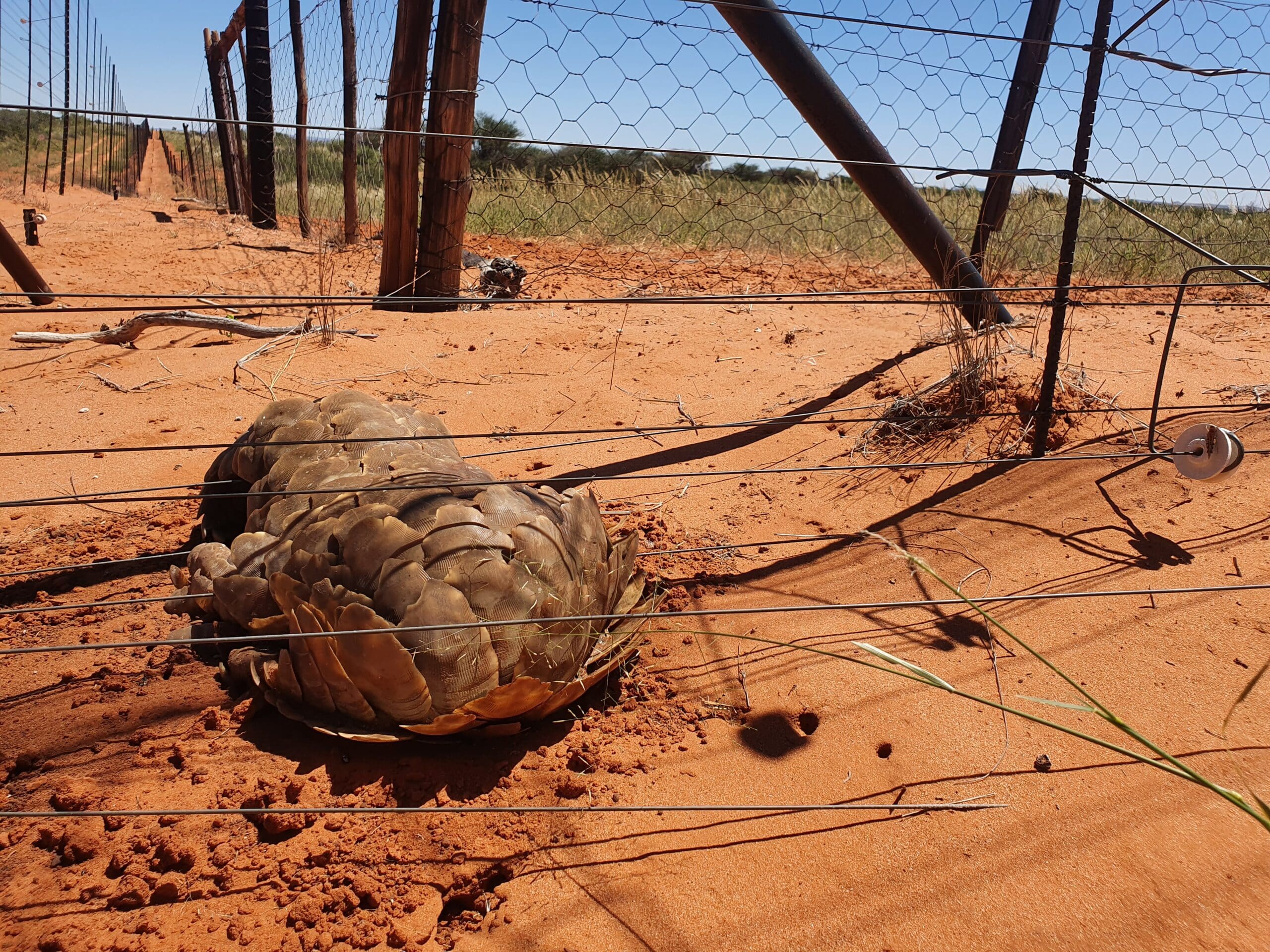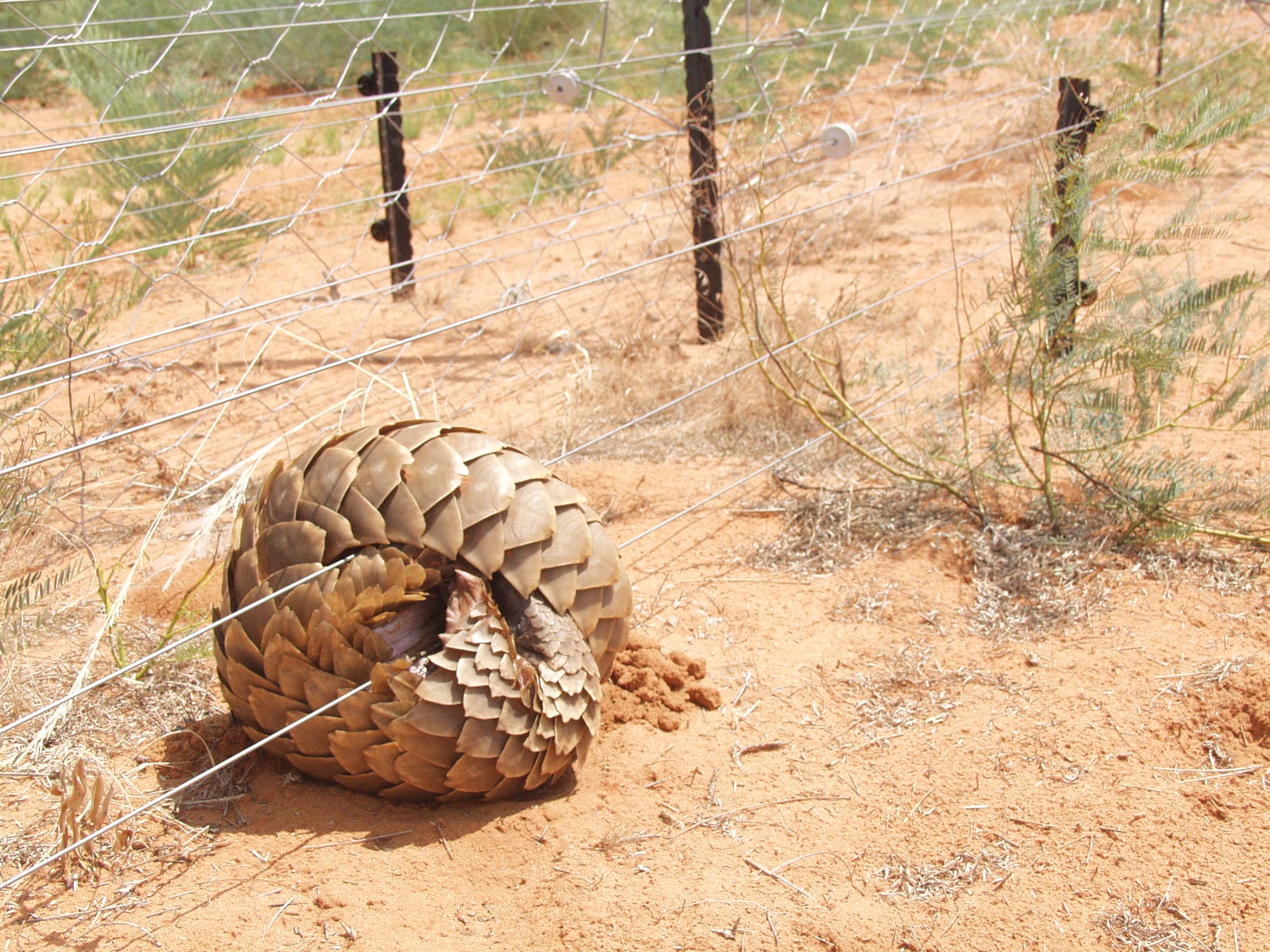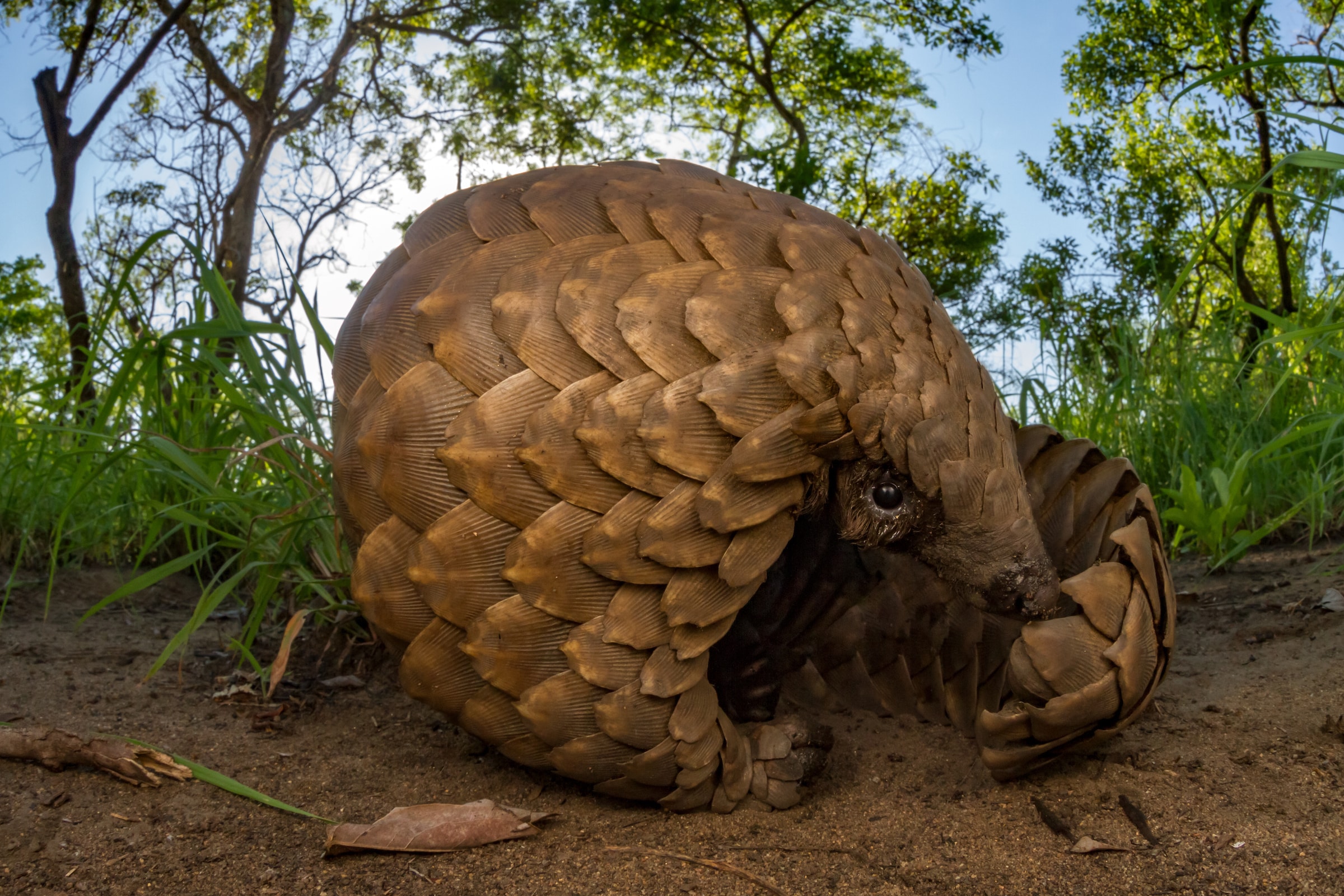Pangolins are the world’s most trafficked mammal, yet illegal poaching and trafficking is eclipsed by another threat of theirs in South Africa.
Commercial and game farmers in South Africa use electric fences as an effective way to protect their animals. These fences prevent the transmission of diseases between livestock and wildlife, and provide protection from predators. By preventing livestock predation incidents, conflict between farmers and carnivores is also mitigated by these electric fences.
While electric fences offer great protection for livestock, they are a serious danger for pangolins. Between 1,000 and 2,000 pangolins are electrocuted every year in South Africa, with most incidents being fatal. In comparison, only 50-100 pangolins are trafficked by wildlife criminals in South Africa each year. Electric fences are a hazard to pangolins throughout Africa, but South Africa’s mortality rates are far above any other country because it has the most fencing installed— nearly four million miles of it. Such a high density of electric fencing, combined with the incredible utility it provides to ranchers, means it’s too vital to be removed entirely.
The region of South Africa with the highest electric fence concentration coincides with a significant range of the ground pangolin, also known as Temminck’s pangolin. Kruger National Park, where the country’s densest population of ground pangolins lives, has over 1,000 miles of electric fences. The lowest strand on these fences is about 200mm off the ground. While they are known for their armor-like scales, ground pangolins walk on their hind legs, exposing their soft underbellies to that lowest fence strand. When a pangolin is threatened, it immediately rolls into a defensive ball. This means that, when first electrocuted, it often rolls its body around that lowest strand of the fence. The poor pangolin will then be electrocuted repeatedly, triggering its instinctual response to roll even tighter. This causes devastating epidermal burns to its abdomen and damage to its organs. The pangolin will often die due to organ failure or starvation after remaining in a curled position around the electric strand for several days.
It is fairly simple to prevent pangolin deaths from electric fences. Raising the height of the fence’s lowest strand from 200mm to 300mm off the ground would help reduce these fatalities. Regular fence checks are also encouraged to locate and free pangolins that are stuck on the fence before irreversible harm is done. Implementing smart energizers, which control the fence’s electricity and limit the amount of time it can flow through a certain strand, also reduces pangolin fatalities since they give the pangolins a chance to move away from the fence without being caught in a deadly loop of continuous electrocution.
Tikki Hywood Foundation, a long-time PCF grantee, is a conservation organization based in neighboring Zimbabwe. With the grant they received from the PCF, Tikki Hywood Foundation, in conjunction with Pangolin.Africa, has expanded their pangolin conservation work into South Africa. They are working with landowners to install pangolin-safe electric fences to reduce the chance of accidental pangolin deaths and teach landowners the value of looking out for one of the smaller, harmless animals that might stray onto their property. With continued support from the PCF, they’ll do everything they can to lessen the dangers that pangolins face from electric fences.






